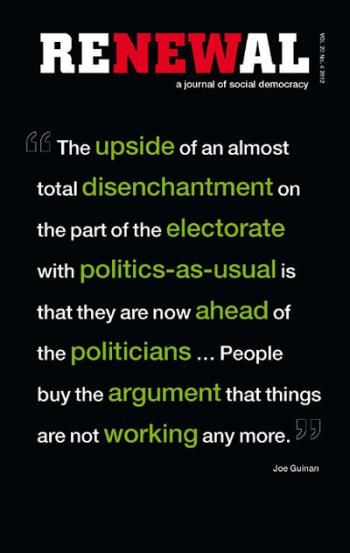
Ed Miliband's Rubik Cube: One Nation Labour and Swedens peoples home
Renewal - Print ISSN 0968-5211 - Online ISSN
Volume 20 Number 4 (2012)
Ed Miliband's Rubik Cube: One Nation Labour and Swedens peoples home
Katrine Kielos
Abstract
Apparently Ed Miliband can do a Rubik’s Cube in one minute and thirty seconds. Impressive to many. Just another proof of the Labour leader’s geekiness to others. The original Rubik’s cube is a 3 x 3 x 3 array made up of 26 smaller cubes in six colours. It was invented by the Hungarian architect Erno¨ Rubik in 1974 and went on to become the world’s biggest-selling toy. Puzzles fascinate us because we know they have an answer. If they were random chaos with no discoverable pattern they wouldn’t be interesting – they would just be junk. You don’t create a solution to a puzzle, you discover its pattern. What you do create by solving it, though, are instructions on how that specific puzzle works.
Sometimes politics is like this too. There are patterns: things that have worked that might work again. With many political problems, just as with Rubik’s Cubes, the solution lies not in what to think but how to think.
During his conference speech in Manchester in October Ed Miliband said the words ‘One Nation’ 46 times. By using the phrase made famous by the Conservative Prime Minister Benjamin Disraeli, Miliband was not only rolling his tanks onto the Conservatives’ lawn, he was also trying to claim the mantle of national unity for Labour.
To a Swede like myself the strategy seemed familiar. For 80 years the term ‘the people’s home’ (Folkhemmet) was the most powerful idea in Swedish politics. Just like ‘One Nation’, it was a concept first used by the right. But the Social Democrats claimed it as their own in the 1920s and it went on to become the foundation for decades of social democratic rule in Sweden.
To cite this article
Katrine Kielos (2012) Ed Miliband's Rubik Cube: One Nation Labour and Swedens peoples home, Renewal, 20(4)
